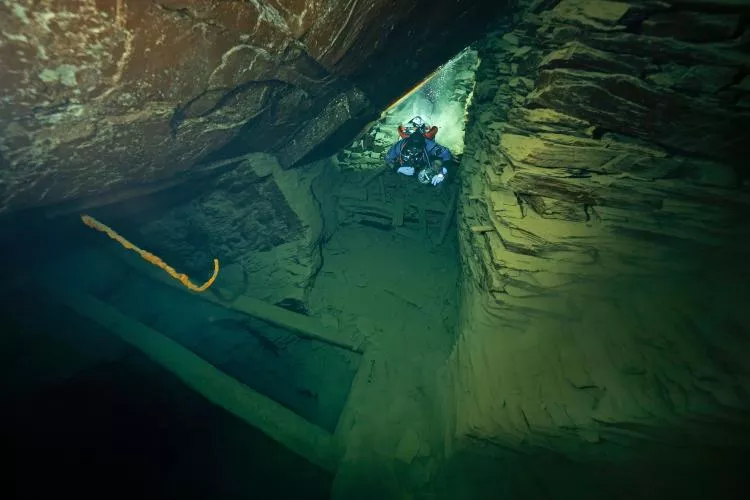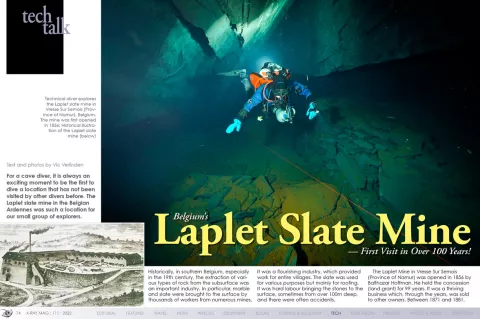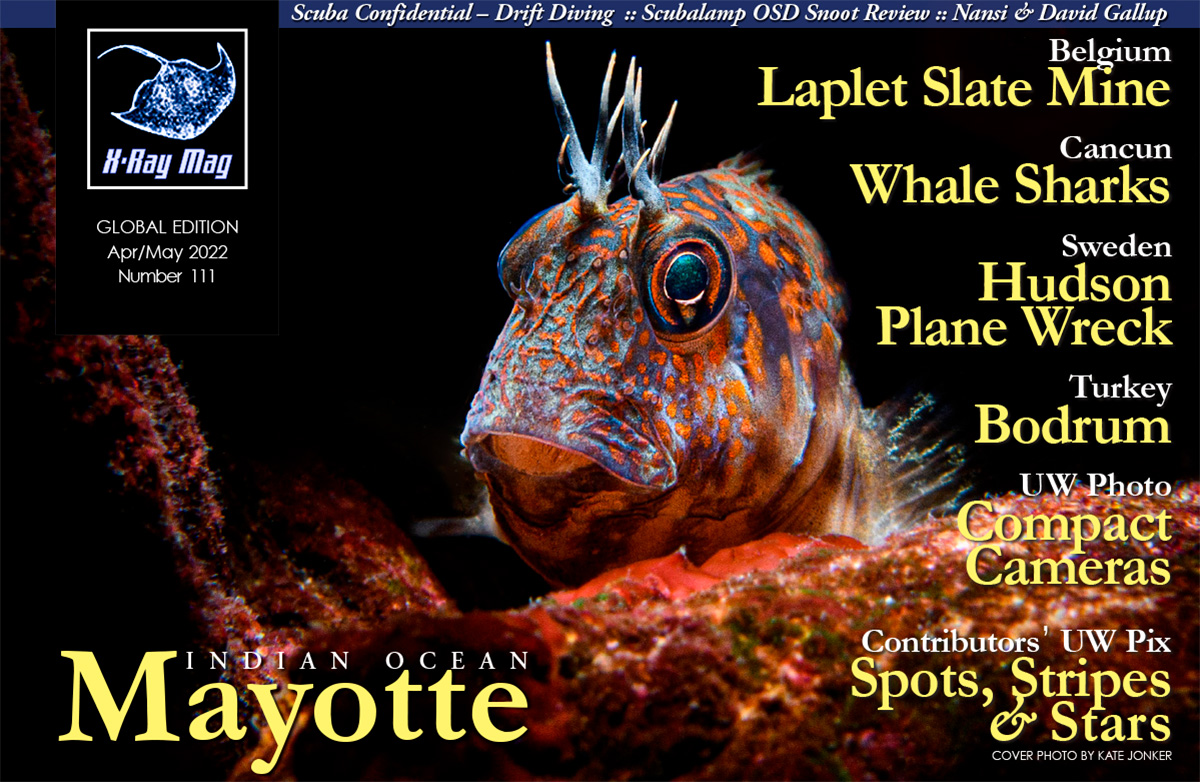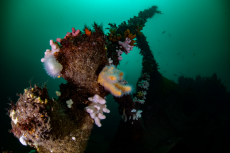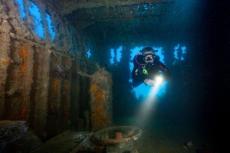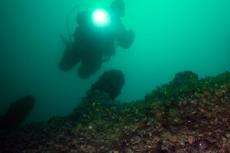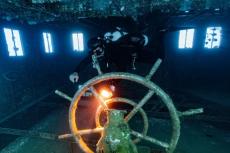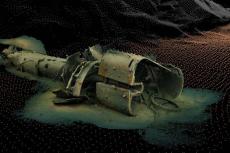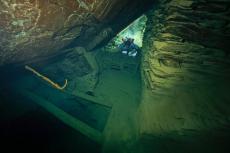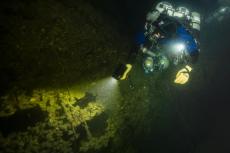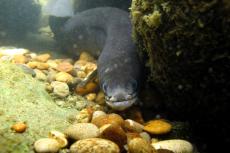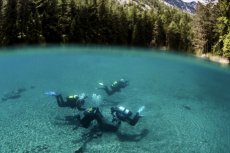For a cave diver, it is always an exciting moment to be the first to dive a location that has not been visited by other divers before. The Laplet slate mine in the Belgian Ardennes was such a location for our small group of explorers.
Contributed by
Historically, in southern Belgium, especially in the 19th century, the extraction of various types of rock from the subsurface was an important industry. In particular, marble and slate were brought to the surface by thousands of workers from numerous mines. It was a flourishing industry, which provided work for entire villages. The slate was used for various purposes but mainly for roofing. It was hard labour bringing the stones to the surface, sometimes from over 100m deep, and there were often accidents.
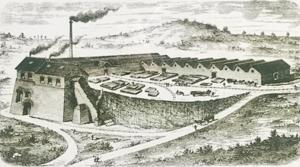
The Laplet Mine in Vresse Sur Semois (Province of Namur) was opened in 1856 by Balthazar Hoffman. He held the concession (land grant) for 99 years. It was a thriving business which, through the years, was sold to other owners. Between 1871 and 1881, more than 2,200,000kg of slate was brought to the surface. But in the early 20th century, it became increasingly difficult to cover the costs of mining. In 1913, the mine was closed for good, and the estate was given over to a different use.
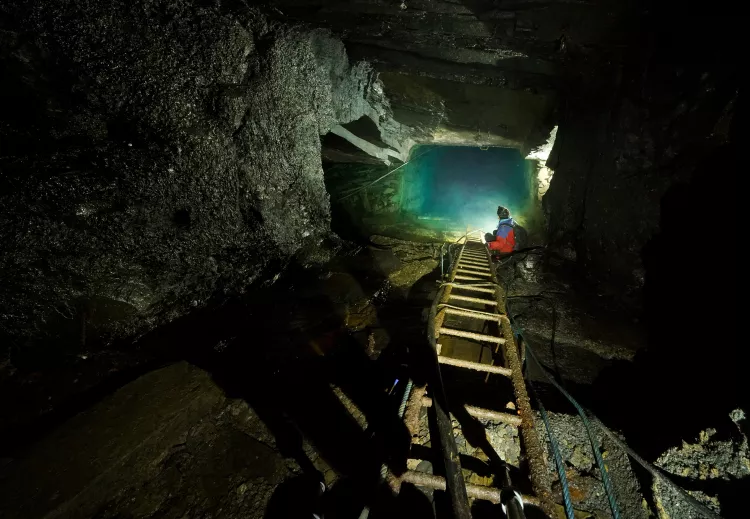
An unexpected discovery
I first heard about the Laplet Mine from my friends Bram Vangorp and Patrik Tuteleers. They had visited the site where the mine was located and were kindly received by the current owner. The estate was now operated as a hotel. To their great surprise, there was still an access point to the slate mine, which was located under the owner’s estate. The original building was still there, and right next to it was the current entrance to the mine.
Under a concrete cover, one could descend into the mine shaft via a small ladder. Thirty metres down, the mine was completely flooded. The water looked crystal clear. Laplet was known in the past as the largest mine in the area, and we did not know, at the time, just how far we would be able to penetrate the labyrinth of corridors. Importantly, we got permission from the owner to take photographs and video footage during our dives.
A week later, I joined my friends for our first dive into the system. I teamed up with Bram to do the first exploration of this mine in over a hundred years, and this stirred up quite a bit of excitement!
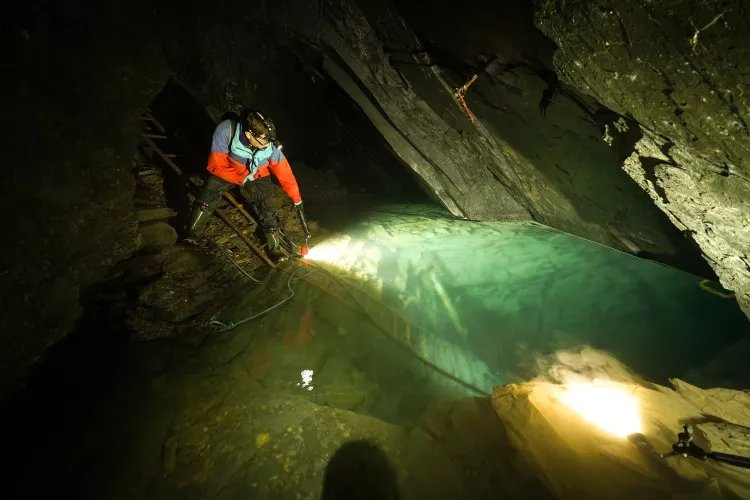
The first dives
I would be diving with a rebreather and Bram with an open system on this dive. Once we were kitted up and ready to head out on the dive, the water had already become quite cloudy due to the movements we had made and the silt we had stirred up. It did not look very promising when I stuck my head underwater and could barely see 30cm ahead. The pool we were in was not very large. We descended a few metres, but we still could not find a passage to the chambers of the mine. Because visibility was getting so bad, I decided to end the dive, and we swam back to the surface.
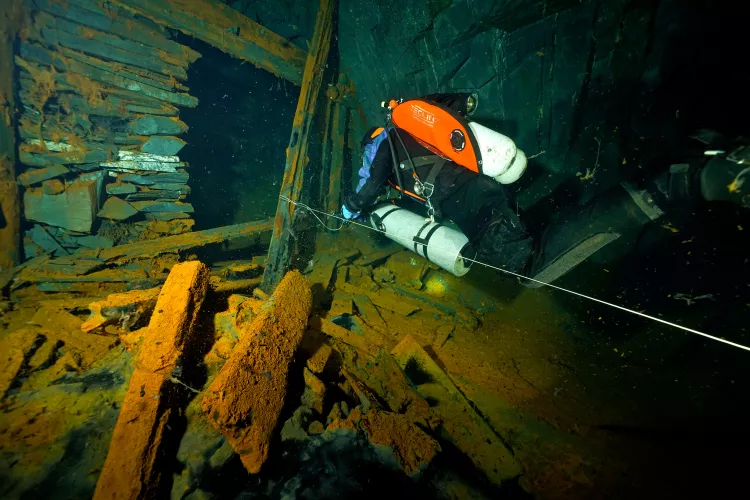
Bram told me that he might have seen a passage, and that he would check it out in the afternoon. After a few hours of waiting, Bram and fellow diver Kurt Storms started their second attempt to find a passage. They had more success during their second attempt and found a passage to a depth of about 30m. The first part was not so good in visibility, but in the deeper part, it became crystal clear. They had a nice dive and could see that the main chamber had several side corridors. This was a major breakthrough, which allowed the team to do further exploration at this historic site.
The following week, we made another arrangement to dive again. We had also found that it was quite difficult to get all the necessary equipment down into the mine. The descent along the small ladder was difficult and required a lot of strength. It was also a dangerous place to experience a decompression incident after a deeper dive. So, we decided that we needed more help lugging the dive equipment, as well as the photo and video equipment. It was then agreed that one team would dive and the other would help carry the equipment in and out.
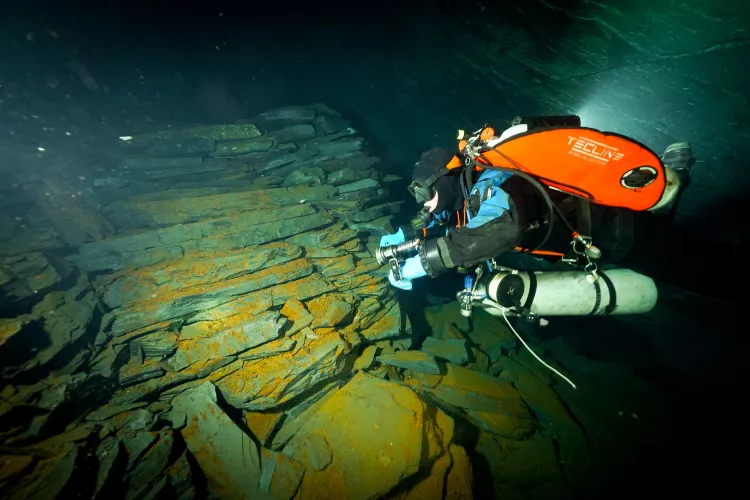
Going where no one has gone in over 150 years
I teamed up with fellow divers Wim Verrijcken and Kurt for this dive, to try and take photographs in the large chamber they had seen on a previous dive. So, I decided to mount a slave flash onto Kurt’s rebreather.
I got a signal from the other team members that they were nearly done kitting up, so I lowered myself to a depth of six metres and waited there for the other two divers in my team. However, it took a long time, and as the visibility seemed to be getting worse, I decided to head out on my own. I suspected that the other team members were dealing with a technical problem, but I did not want to wait until the visibility was zero, as it had been during my first dive.
In the first few metres, the visibility was still bad, but then it became crystal clear, and I could follow the previously laid guide line with ease. I was in a fairly wide corridor, which quickly descended to a depth of 30m. On both sides of this corridor, there were other side corridors of different sizes. In the large corridor, there were thick tree logs, which served as supports. Along the way, I came across several ladders, which had been left behind when the last stonemason had left the mine, over 100 years ago.
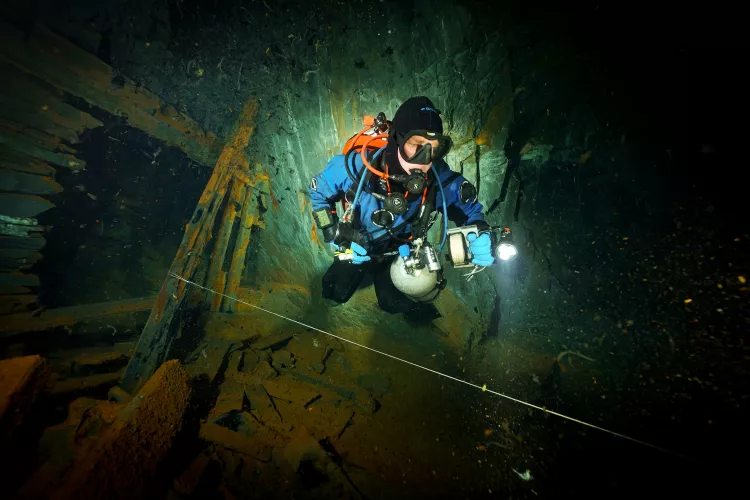
At the end of the large room, I saw that there were two more corridors leading to a deeper area, and I decided to follow one of them. The corridor quickly descended deeper again, and along the way, I saw all kinds of objects that I could not immediately identify.
At a depth of 63m, I did not see a next connection right away, so I decided to turn back. On the way back, I met my fellow dive team members who were making their descent. After 15 minutes of decompression, I was back at the surface and could tell my story.
It had been a wonderful dive in a unique location. I had taken some nice pictures, but unfortunately, there were no divers in them.
The next weekend, I dived the mine with Bram to explore the different side passages. This was another dive where there were more questions than answers, as we inspected the different rooms. But during this dive, we did manage to take the necessary photos. I think this mine still hides many secrets, and we shall continue making some nice discoveries there, a place where time has stood still since 1913.

